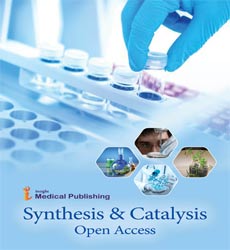Abstract
Enzymolysis of By-Product Derived from Sheep Placenta to Production of Highly Active Antioxidant Peptide
Title: A highly active antioxidant peptide from enzymatic hydrolysates of sheep placenta by-product protein was purified and identified.
Background: Bioactive peptides, as products of hydrolysis of food proteins, become the focus of current research. They exert various biological roles, one of the most crucial of which is the antioxidant activity. Sheep placenta has long been used in traditional Chinese medicine for the treatment of physiological abnormalities in human organs, and recent studies have demonstrated that it is a rich source of biological and therapeutic compounds. Although numerous activities of sheep placental peptides have been reported so far, little information is known about antioxidant peptides from sheep placenta by-product protein. In this study, we for the first time reported highly active antioxidant peptide from sheep placenta by-product protein hydrolysate.
Methods and findings: Herein, four different proteases were employed for the hydrolysis of sheep placenta by-product, respectively. Of the various hydrolysates, papain hydrolysate exhibited the highest 1,1-diphenyl-2-picrylhydrazyl (DPPH) radical scavenging activity and the optimum hydrolysis conditions were achieved as the substrate concentration of 33 mg/mL, pH 6.4, temperature 55°C, enzyme dosage 4900 U/g, and hydrolysis time 120 min using response surface methodology. Then, the papain hydrolysate was purified sequentially by DA201-C macroporous resin, ultrafiltration, Sephadex G-10 gel filtration, and reversedphase high performance liquid chromatography. The sequence of the peptide with the highest antioxidant activity was identified to be Glu-Pro-Val-Ser-His-Phe (molecular weight of 679.59 Da). The IC50 value of the peptide on scavenging DPPH radical was 0.074 mg/mL, lower than that of glutathione.
Conclusions: The enzymatic hydrolysates from sheep placenta by-product possess a potent biological activity.
Author(s): Li Ming, Jiang Huimin, Cao Guangqun, Yang Cheng and Cao Yuhua
Abstract | Full-Text | PDF
Share This Article
Google Scholar citation report
Citations : 94
Synthesis and Catalysis: Open Access received 94 citations as per Google Scholar report
Abstracted/Indexed in
- Google Scholar
- China National Knowledge Infrastructure (CNKI)
- Publons
- Secret Search Engine Labs
- Euro Pub
Open Access Journals
- Aquaculture & Veterinary Science
- Chemistry & Chemical Sciences
- Clinical Sciences
- Engineering
- General Science
- Genetics & Molecular Biology
- Health Care & Nursing
- Immunology & Microbiology
- Materials Science
- Mathematics & Physics
- Medical Sciences
- Neurology & Psychiatry
- Oncology & Cancer Science
- Pharmaceutical Sciences

